Abstract
A comparison was made between the phosphate- and glucose-transport systems of intact erythrocytes and resealed washed membranes. Glucose transport exhibits identical properties in both cases, but the phosphate-transport system does not appear to have survived the membrane isolation procedure unaltered. Evidence is presented to support the suggestion that some form of structural perturbation has occurred to the protein mediator of phosphate exchange.
Full text
PDF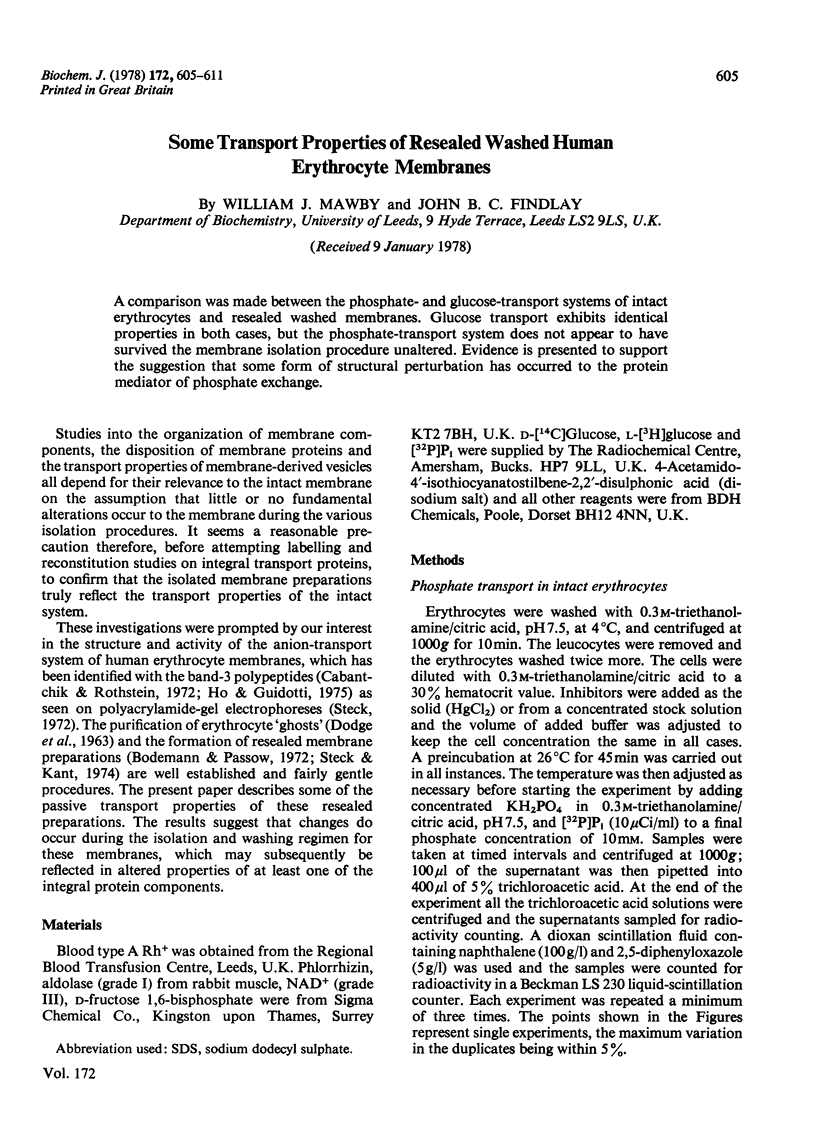
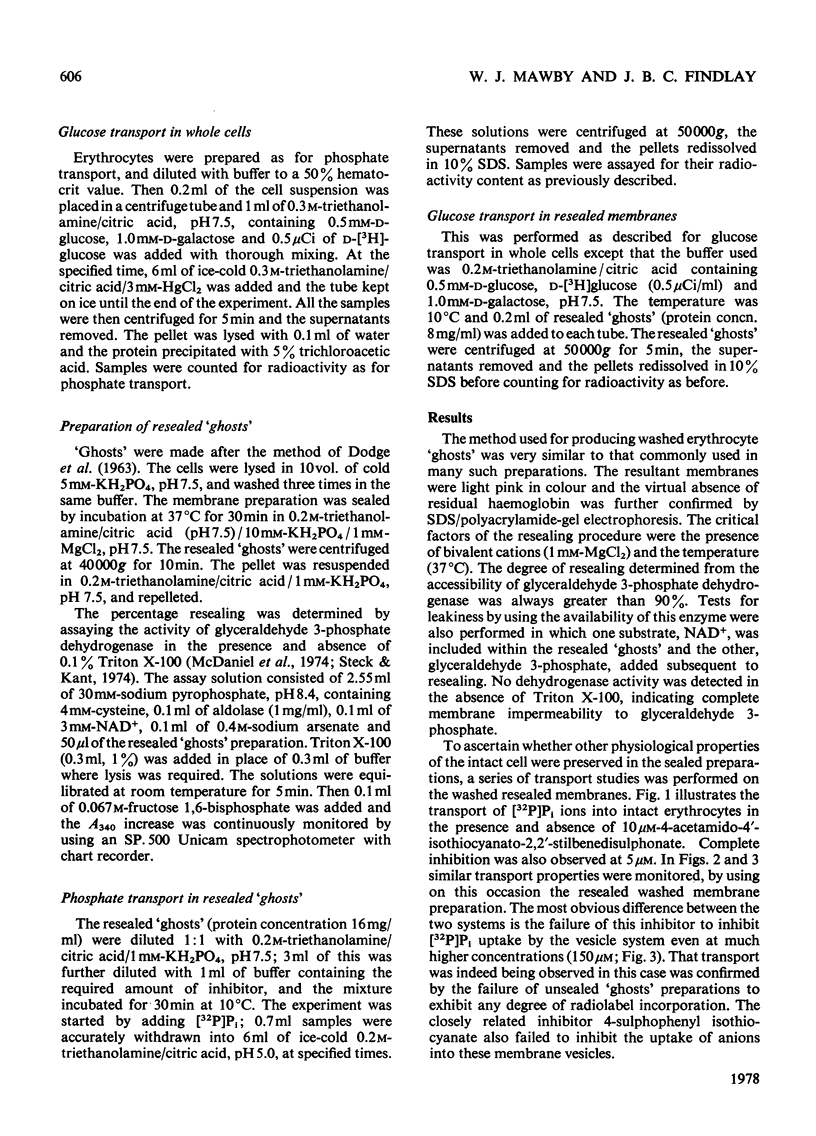
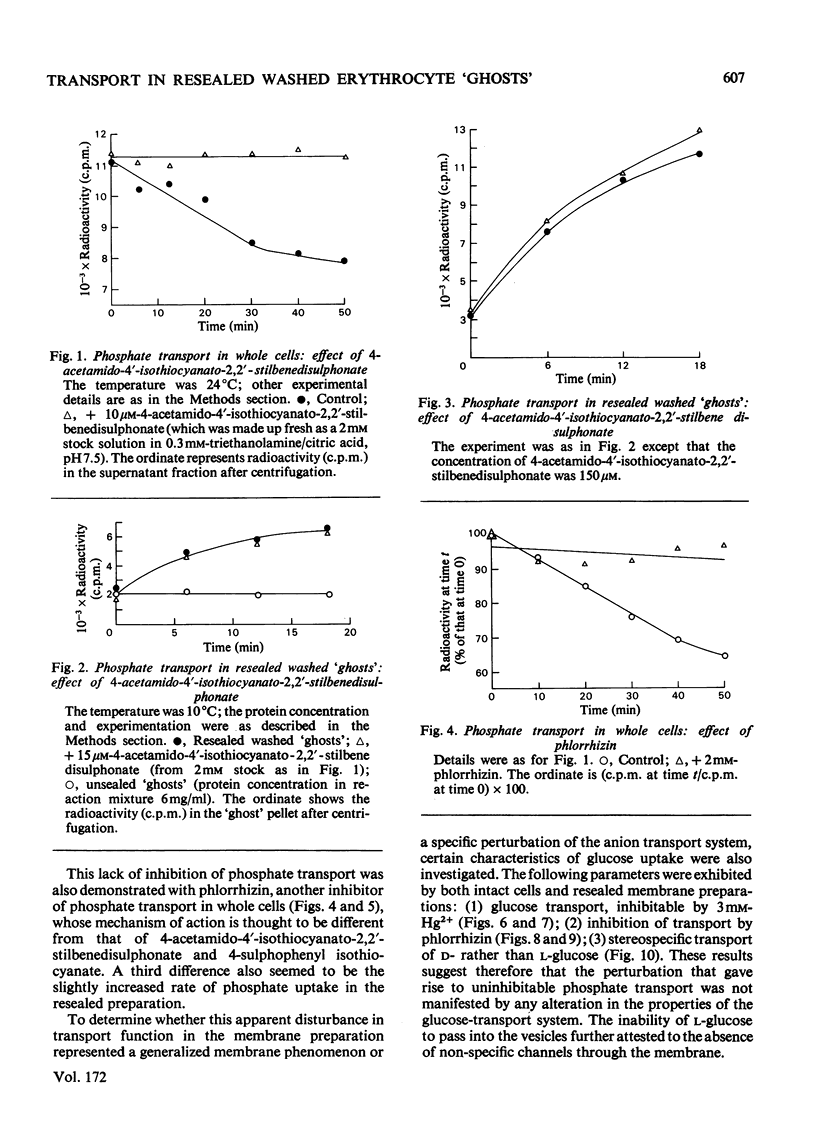
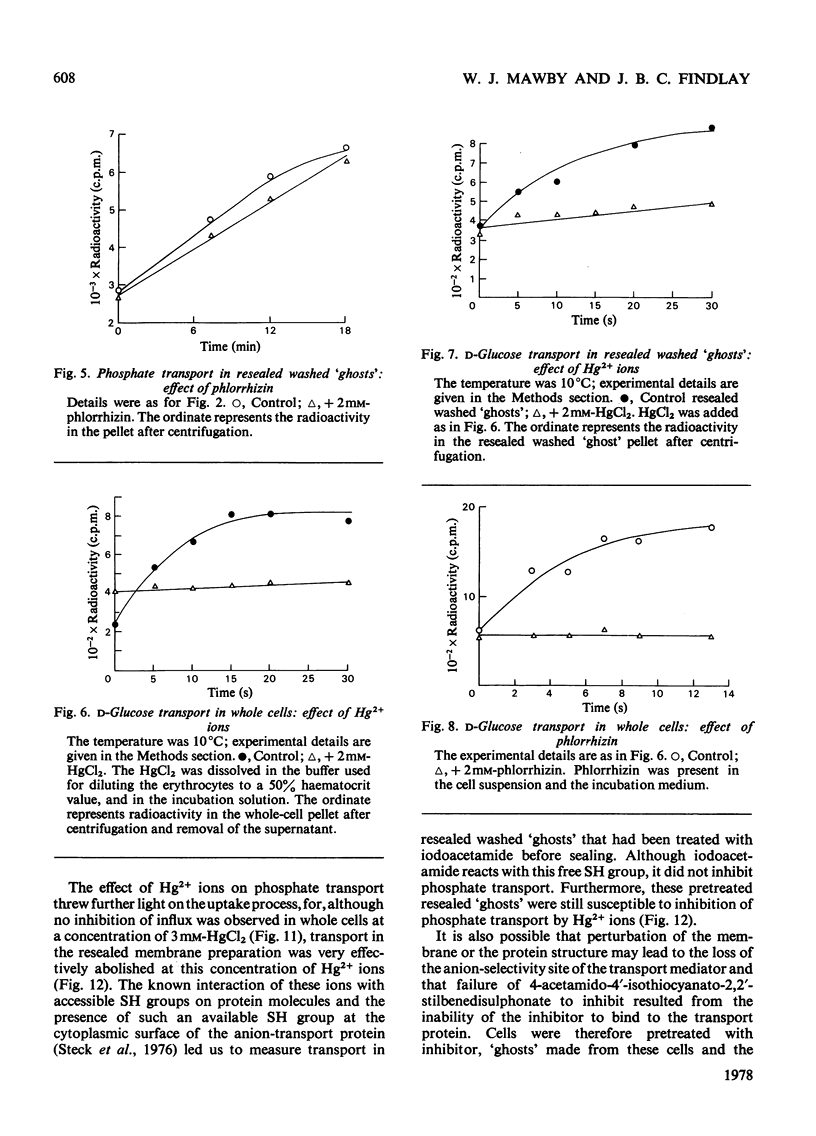
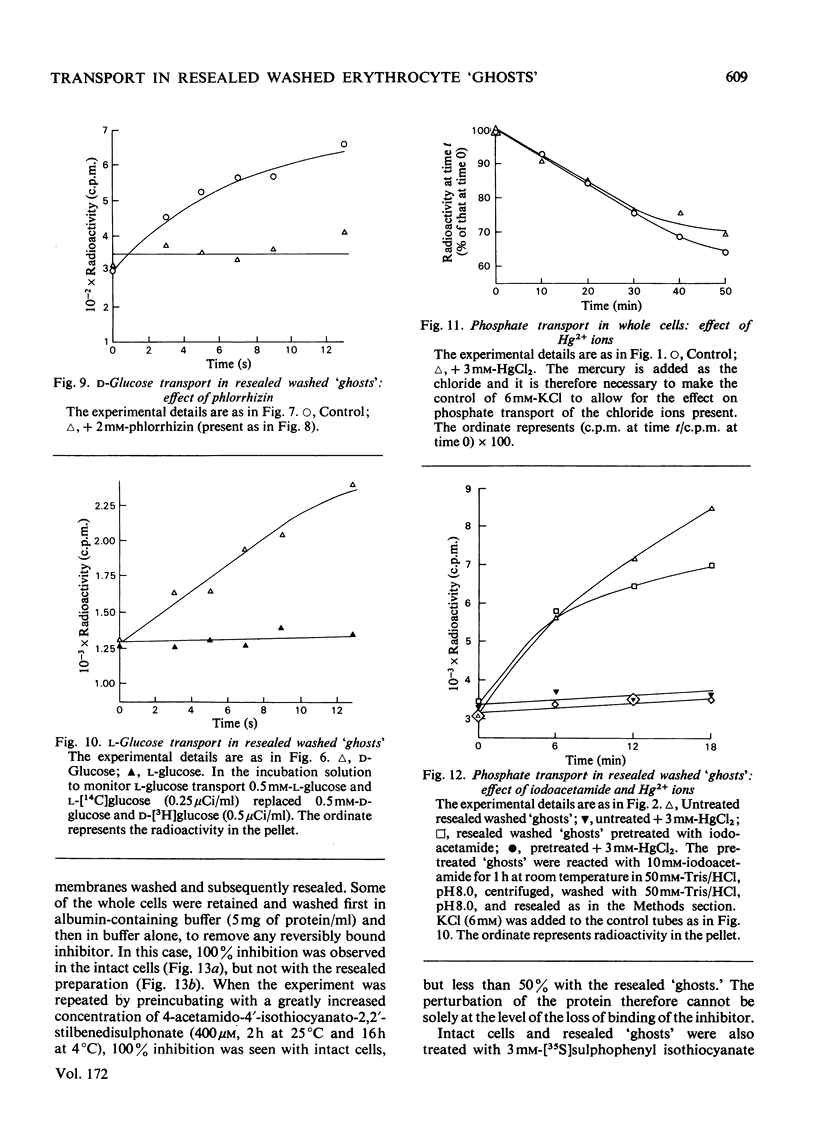
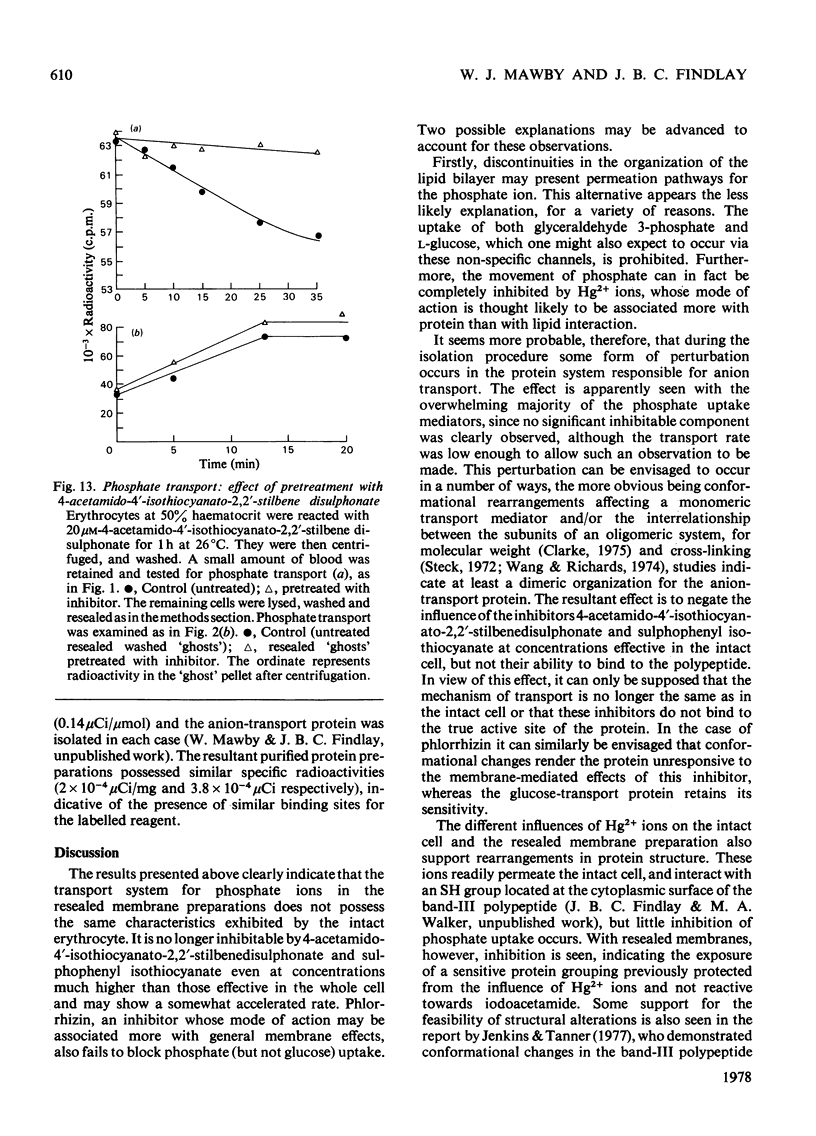
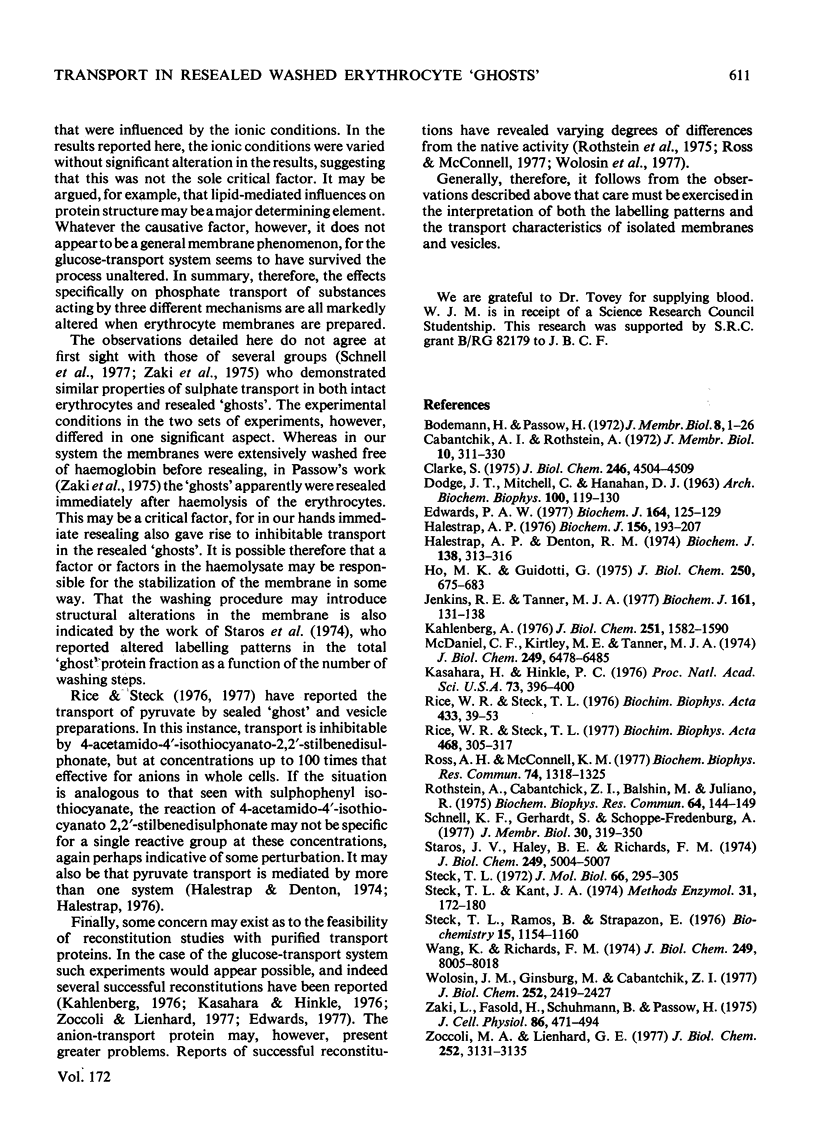
Selected References
These references are in PubMed. This may not be the complete list of references from this article.
- Bodemann H., Passow H. Factors controlling the resealing of the membrane of human erythrocyte ghosts after hypotonic hemolysis. J Membr Biol. 1972;8(1):1–26. doi: 10.1007/BF01868092. [DOI] [PubMed] [Google Scholar]
- Cabantchik Z. I., Rothstein A. The nature of the membrane sites controlling anion permeability of human red blood cells as determined by studies with disulfonic stilbene derivatives. J Membr Biol. 1972 Dec 29;10(3):311–330. doi: 10.1007/BF01867863. [DOI] [PubMed] [Google Scholar]
- DODGE J. T., MITCHELL C., HANAHAN D. J. The preparation and chemical characteristics of hemoglobin-free ghosts of human erythrocytes. Arch Biochem Biophys. 1963 Jan;100:119–130. doi: 10.1016/0003-9861(63)90042-0. [DOI] [PubMed] [Google Scholar]
- Edwards P. A. Reconstitution of glucose-transporting vesicles from erythrocyte membranes disaggregated in detergent. Biochem J. 1977 Apr 15;164(1):125–129. doi: 10.1042/bj1640125. [DOI] [PMC free article] [PubMed] [Google Scholar]
- Halestrap A. P., Denton R. M. Specific inhibition of pyruvate transport in rat liver mitochondria and human erythrocytes by alpha-cyano-4-hydroxycinnamate. Biochem J. 1974 Feb;138(2):313–316. doi: 10.1042/bj1380313. [DOI] [PMC free article] [PubMed] [Google Scholar]
- Halestrap A. P. Transport of pyruvate nad lactate into human erythrocytes. Evidence for the involvement of the chloride carrier and a chloride-independent carrier. Biochem J. 1976 May 15;156(2):193–207. doi: 10.1042/bj1560193. [DOI] [PMC free article] [PubMed] [Google Scholar]
- Ho M. K., Guidotti G. A membrane protein from human erythrocytes involved in anion exchange. J Biol Chem. 1975 Jan 25;250(2):675–683. [PubMed] [Google Scholar]
- Jenkins R. E., Tanner M. J. Ionic-strength-dependent changes in the structure of the major protein of the human erythrocyte membrane. Biochem J. 1977 Jan 1;161(1):131–138. doi: 10.1042/bj1610131. [DOI] [PMC free article] [PubMed] [Google Scholar]
- Kahlenberg A. Partial puridication of a membrane protein from human erythrocytes involved in glucose transport. J Biol Chem. 1976 Mar 25;251(6):1582–1590. [PubMed] [Google Scholar]
- Kasahara M., Hinkle P. C. Reconstitution of D-glucose transport catalyzed by a protein fraction from human erythrocytes in sonicated liposomes. Proc Natl Acad Sci U S A. 1976 Feb;73(2):396–400. doi: 10.1073/pnas.73.2.396. [DOI] [PMC free article] [PubMed] [Google Scholar]
- McDaniel C. F., Kirtley M. E., Tanner M. J. The interaction of glyceraldehyde 3-phosphate dehydrogenase with human erythrocyte membranes. J Biol Chem. 1974 Oct 25;249(20):6478–6485. [PubMed] [Google Scholar]
- Rice W. R., Steck T. L. Pyruvate flux into resealed ghosts from human erythrocytes. Biochim Biophys Acta. 1976 Apr 16;433(1):39–53. doi: 10.1016/0005-2736(76)90176-0. [DOI] [PubMed] [Google Scholar]
- Rice W. R., Steck T. L. Pyruvate transport into inside-out vesicles isolated from human erythrocyte membranes. Biochim Biophys Acta. 1977 Jul 14;468(2):305–317. doi: 10.1016/0005-2736(77)90123-7. [DOI] [PubMed] [Google Scholar]
- Rothstein A., Cabantchik Z. I., Balshin M., Juliano R. Enhancement of anion permeability in lecithin vesicles by hydrophobic proteins extracted from red blood cell membranes. Biochem Biophys Res Commun. 1975 May 5;64(1):144–150. doi: 10.1016/0006-291x(75)90230-2. [DOI] [PubMed] [Google Scholar]
- Schnell K. F., Gerhardt S., Schöppe-Fredenburg A. Kinetic characteristics of the sulfate self-exchange in human red blood cells and red blood cell ghosts. J Membr Biol. 1977 Jan 28;30(4):319–350. doi: 10.1007/BF01869675. [DOI] [PubMed] [Google Scholar]
- Staros J. V., Haley B. E., Richards F. M. Human erythrocytes and resealed ghosts. A comparison of membrane topology. J Biol Chem. 1974 Aug 10;249(15):5004–5007. [PubMed] [Google Scholar]
- Steck T. L. Cross-linking the major proteins of the isolated erythrocyte membrane. J Mol Biol. 1972 May 14;66(2):295–305. doi: 10.1016/0022-2836(72)90481-0. [DOI] [PubMed] [Google Scholar]
- Steck T. L., Kant J. A. Preparation of impermeable ghosts and inside-out vesicles from human erythrocyte membranes. Methods Enzymol. 1974;31:172–180. doi: 10.1016/0076-6879(74)31019-1. [DOI] [PubMed] [Google Scholar]
- Wang K., Richards F. M. An approach to nearest neighbor analysis of membrane proteins. Application to the human erythrocyte membrane of a method employing cleavable cross-linkages. J Biol Chem. 1974 Dec 25;249(24):8005–8018. [PubMed] [Google Scholar]
- Wolosin J. M., Ginsburg H., Cabantchik Z. I. Functional characterization of anion transport system isolated from human erythrocyte membranes. J Biol Chem. 1977 Apr 10;252(7):2419–2427. [PubMed] [Google Scholar]
- Zaki L., Fasold H., Schuhmann B., Passow H. Chemical modification of membrane proteins in relation to inhibition of anion exchange in human red blood cells. J Cell Physiol. 1975 Dec;86(3 Pt 1):471–494. doi: 10.1002/jcp.1040860305. [DOI] [PubMed] [Google Scholar]
- Zoccoli M. A., Lienhard G. E. Monosaccharide transport in protein-depleted vesicles from erythrocyte membranes. J Biol Chem. 1977 May 25;252(10):3131–3135. [PubMed] [Google Scholar]


